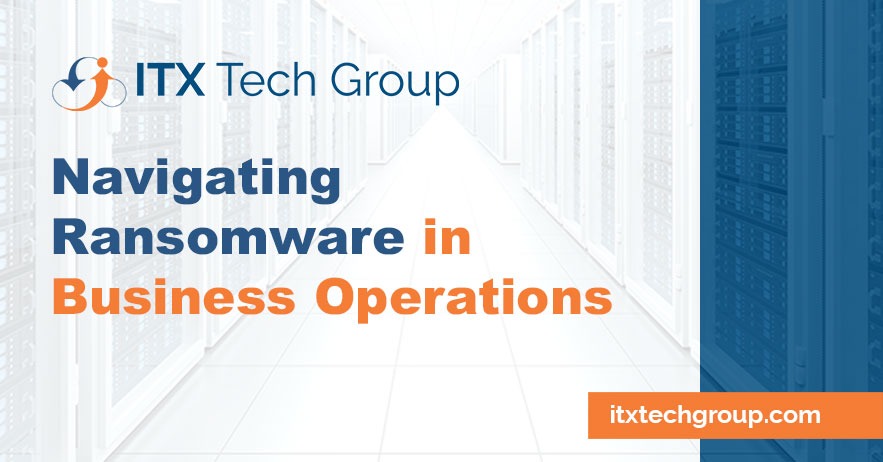In an era where digital threats loom large, ransomware has emerged as a formidable adversary for businesses of all sizes.
The impact of a ransomware attack extends beyond financial losses, affecting brand reputation, customer trust, and operational continuity. Navigating the complexities of ransomware in business operations requires a strategic and proactive approach.
In this article, we’ll explore key insights and actionable steps to help businesses fortify their defenses and effectively navigate the threat landscape of ransomware.
Understanding the Ransomware Threat Landscape
Ransomware is malicious software designed to encrypt files on a victim’s computer or network, rendering them inaccessible. The attackers then demand a ransom, typically in cryptocurrency, in exchange for providing the decryption key.
The sophistication of ransomware attacks continues to evolve, making it imperative for businesses to adopt a multi-faceted strategy to mitigate risks effectively.
Robust Cybersecurity Practices
The first line of defense against ransomware begins with robust cybersecurity practices. This includes implementing advanced endpoint protection, firewalls, and intrusion detection systems.
Regularly updating and patching software vulnerabilities is critical, as many ransomware attacks exploit outdated systems.
Employee Training and Awareness
Employees are often the unwitting entry point for ransomware attacks.
Conduct regular training sessions to educate staff about phishing emails, social engineering tactics, and the importance of not clicking on suspicious links or downloading unknown attachments.
Creating a vigilant and informed workforce acts as a crucial human firewall against ransomware threats.
Data Backups
Regularly backing up essential data is a fundamental strategy in ransomware defense.
Ensure that backups are stored in a secure, isolated environment, and routinely test restoration processes to guarantee they can be relied upon in the event of an attack. This proactive measure can significantly reduce the impact of a ransomware incident.
Network Segmentation
Implementing network segmentation can help contain the spread of ransomware within a network. By dividing the network into isolated segments, businesses can restrict lateral movement, preventing the rapid proliferation of the malware.
Incident Response Plan
Having a well-defined incident response plan is crucial for effective navigation in the aftermath of a ransomware attack. The plan should outline roles and responsibilities, communication protocols, and the steps to be taken in the event of a security incident.
Regularly test and update the plan to ensure its effectiveness.
Collaborate with Cybersecurity Experts
Engage with cybersecurity experts or managed security service providers (MSSPs) to augment your defense mechanisms.
MSSPs can provide real-time threat intelligence, conduct security audits, and offer proactive monitoring to identify and neutralize potential threats before they escalate.
Regular Security Audits
Conduct regular security audits to assess the vulnerabilities in your network and systems. Identifying and patching potential weaknesses is a preemptive measure that reduces the risk of falling victim to ransomware.
Compliance with Regulations
Ensure compliance with industry-specific regulations related to data protection and cybersecurity. Adhering to these standards not only protects sensitive information but also establishes a framework for robust security practices.
Legal and Law Enforcement Collaboration
In the event of a ransomware attack, collaborate with law enforcement agencies and legal experts. Reporting incidents can contribute to ongoing investigations and may lead to the apprehension of cybercriminals.
Continuous Education and Adaptation
Cyber threats, including ransomware, are continually evolving. Implement a culture of continuous education and adaptation within your organization.
Stay informed about the latest cybersecurity trends and technologies to ensure your defense mechanisms remain effective against emerging threats.
Conclusion
Navigating ransomware challenges in business operations requires a holistic and proactive approach.
By combining robust cybersecurity practices, employee awareness, strategic backups, and collaboration with cybersecurity experts, businesses can build a resilient defense against the evolving threat landscape of ransomware.
Staying informed, regularly updating security measures, and fostering a security-conscious culture are essential elements in fortifying business operations against the potentially devastating impact of ransomware attacks.
ITX Tech Group has been serving small, medium, and large scale businesses with their IT support and cybersecurity needs all over the United States since 2011, so we’re confident we can provide you with affordable, professional IT solutions for years to come!
Connect with us for a free consultation to discuss your business technology needs.

